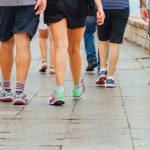People are becoming more and more aware of the need for activity, Dr. Joel Press tells Reuters Health in a phone interview.
“We were meant to move. We were not meant to be stagnant in any way, so I think this study does confirm that. It’s a big study where they looked at a lot of people,” says Press, who is physiatrist-in-chief at the Hospital for Special Surgery in New York.
Usually, Press tells people who already have back pain to cut down on the sitting and increase movement with low-impact activities, such as walking.
“Generally lower impact, walking type things are probably the starting point. Swimming is another low impact activity that puts less load on your back, but you’re still getting a lot of cardiovascular fitness and movement with it,” said Press, who was not involved in the current study.
It may be best to avoid starting out with sports that have a lot of twisting and turning, such as golf, baseball and tennis unless you take precautions to try not to get into a position where you’re going to make it worse, he noted.
“I think the biggest thing is, if you’re doing an activity and every time you’re doing it the pain intensifies while you’re doing the activity, or even afterward, you’re worse off than you were before,” Press says. “If somebody does an exercise and they’re a little sore right afterward, but by later that day they feel fine, and the next day they’re no worse, they feel fine, that’s a green light—go ahead, you’re doing okay.”
Reference
- Shiri R, Falah-Hassani K. Does leisure time physical activity protect against low back pain? Systematic review and meta-analysis of 36 prospective cohort studies. Br J Sports Med. 2017 Jun 14. pii: bjsports-2016-097352. doi: 10.1136/bjsports-2016-097352. [Epub ahead of print]

